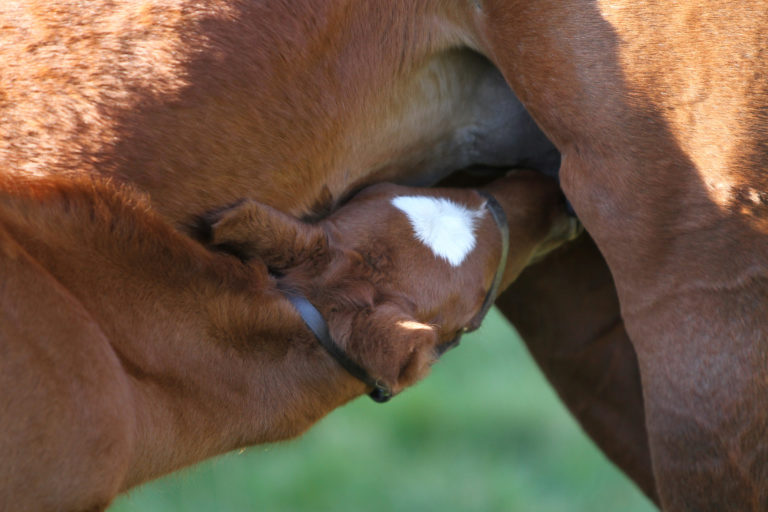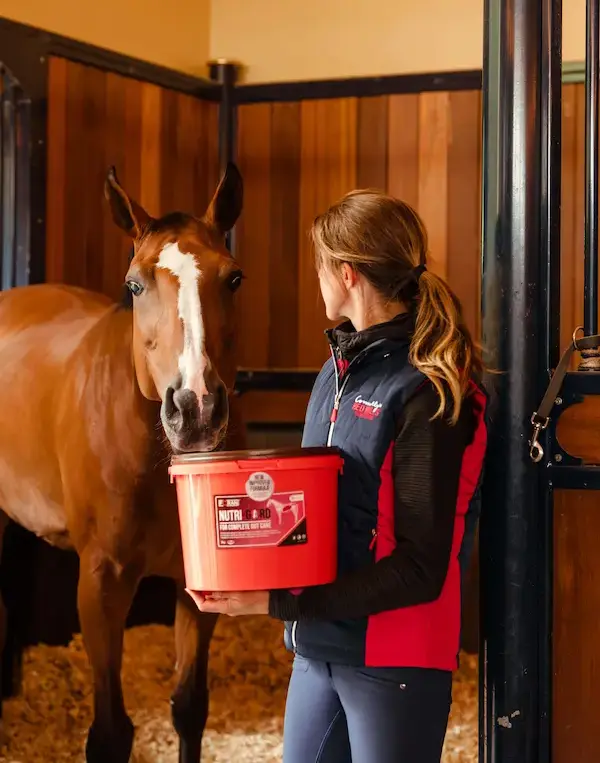
Why Collecting Donor Colostrum is a Good Plan!
Colostrum or “first milk” is the thick, yellow secretion from the mammary gland. It is produced in the mare’s udder during the last two to four weeks of gestation in response to hormonal changes and contain vital immunoglobulins (antibodies) needed to protect the foal against infectious diseases. The foal is not born with an immune system and so it must consume adequate quantities of these vital antibodies, ideally within 3 hrs after it is born. The absorption of these vital antibodies in the foal’s small intestine significantly reduces after its first few hours of life and so, foals that miss out on colostrum are at risk of illness. Ensuring the foal receives adequate colostrum is of paramount importance.
It is a good idea to have some frozen colostrum on-hand before a breeding mare gives birth. If the mare’s own colostrum is poor quality, the mare dies or refuses to let the foal suckle, the foal is too weak to nurse, or another unexpected problem crops up, stored colostrum can be a lifesaver.
Donor colostrum can be collected from breeding mares, excluding those that have foaled for the first time (primiparous), relatively easily, although some mares will object to being milked. To collect colostrum the mare should be gently restrained by a handler, allowing a second person to focus on the milking. This person should firstly wash their hands and then clean the mare’s udder with warm water. Holding a clean container under the udder the ‘milker’ should grasp the teat between their thumb and forefinger, push up to simulate the foal butting at the teat and then gently squeeze and pull down on the teat. Up to 250ml of colostrum can be collected and stored for later use.

Donor colostrum can be collected from breeding mares, excluding those that have foaled for the first time (primiparous), relatively easily, although some mares will object to being milked. To collect colostrum the mare should be gently restrained by a handler, allowing a second person to focus on the milking. This person should firstly wash their hands and then clean the mare’s udder with warm water. Holding a clean container under the udder the ‘milker’ should grasp the teat between their thumb and forefinger, push up to simulate the foal butting at the teat and then gently squeeze and pull down on the teat. Up to 250ml of colostrum can be collected and stored for later use.
The colostrum should be strained (e.g. through a muslin) and then labelled with the mare’s name, date and specific gravity. The colostrum can then be frozen for up to one year in a household freezer or 2 years in a deep freezer. When needed, the colostrum should be thawed at room temperature or in slightly warm (not hot) water, do not thaw by microwave as this will destroy essential antibodies. If the history of the mare is unknown or they are foaling for the first time they should not be used as a source of donor colostrum due to the risk of Neonatal Isoerythrolysis (NI).
If the foal does not get adequate colostrum or if the colostrum he/she ingests is of poor quality, the foal will have a failure of passive transfer of immunity. The foal will be a high risk of developing disease. Some farms routinely test their foals’ Immunoglobin-G (IgG) levels after 12 hours of birth to ensure that their foals have had a successful transfer of immunity. If IgG levels are below a threshold, they will administer “hyperimmune” plasma intravenously to facilitate transfer of immunity. However, this can be expensive and comes with its own risks so good colostrum is a much better option!
Contact our sales team via WhatsApp or email

Nicolas Gaumerais
Group Commercial Manager GCC Region
Based in the UAE, Nicolas Gaumerais is the Commercial Manager of the Connolly's RED MILLS Group which includes Foran Equine supplements and Connolly's RED MILLS horse feed in the GCC region. Nicholas regularly travels across the Gulf.











